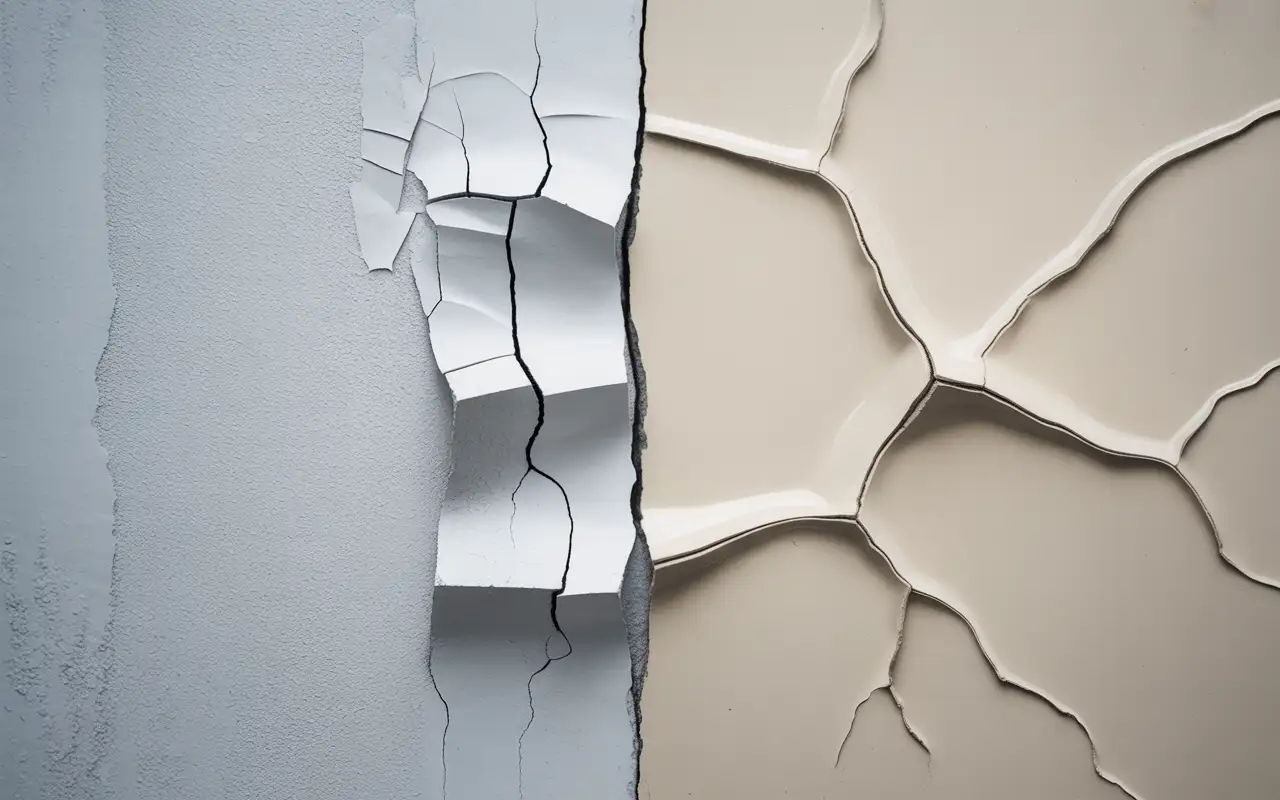Did you know that painting costs can vary by 300% from area to area and project type to project type? Many homeowners experience sticker shock when they discover how much painters charge for their services. Understanding painter pricing can help you budget accurately and not pay too much for a painting project. This guide includes exact pricing ranges, the big cost factors, and cost-saving tips based on current market data from around the United States.
How Much Do Painters Charge per Square Foot?

Costs for Exterior Paint per Square Foot
For exterior paint work, the costs typically run from $3 to $7 per square foot. The higher cost arises due to preparation for weather, surface, and challenges in accessing the structure.
Table of Contents
ToggleThe weather handicap affects material and other costs. Exterior painting materials fail sooner than interior-grade interfaces. The materials must withstand UV rays, moisture, rubbing, and heating up and cooling down, on top of reasonably priced railings. Quality exterior painting materials typically cost 20-30% more than interior painting materials.
Exterior projects take longer because surface prep takes a lot of time and labor. For example, power washing, scraping off old paint and caulk, and filling cracks and gaps all add time and labor costs. Additionally, some homes may require substantial amounts of preparation work before painting the building with its new paint.
When Square Foot Pricing is Appropriate
Square foot pricing works best in larger, open spaces that are free from barriers and obstructions. Great rooms, master bedrooms, and open floor plans are excellent examples of spaces that are well-suited to square-foot pricing.
Complex rooms that have lots of trim, doors, and windows are not good spaces for square foot pricing to be used. Kitchens and bathrooms frequently are spaces that will require pricing based on the room, as opposed to pricing based on square footage.
To measure square footage accurately, you will need to measure the height and width of the walls separately. Be sure to subtract the area of doors and windows from calculations for more accurate pricing.
How Much Do Painters Charge per Hour?
Breakdown of Hourly Rates by Skill Level
Apprentice painters range from $25 to $35 per hour, and as such are generally inexperienced and entry-level workers performing basic tasks under supervision. They are appropriate for very straightforward projects with little prep work.
Experienced painters will charge between $35 and $50 per hour and are workers who have been painting for 3 to 10 years and can perform nearly all residential painting independently.
Master painters and specialists will charge between $50 and $75 per hour and are experts engaged in complex work such as kitchen cabinet painting or decorative finishes, as well as high-end residential work.
Hourly Rates are Particularly Affected by Geographical Location
Hourly rates vary widely in part due to geographical location, as well as living costs and demand. Urban locations typically pay 20-40% more than rural locations, as living costs are generally higher in urban environments.
When Hourly Pricing Applies to a Task
Hourly pricing is more commonly associated with small tasks that require a ‘touch-up’ job. Simple fixes, such as touch-ups, minor repairs, or maintenance charges, can sometimes be priced on an hourly basis.
Hourly pricing can also be applied to detailed work such as decorative finishes, intricate and detailed trim painting, and refining and refinishing cabinets. Many of these projects are difficult to estimate on a square footage basis, primarily because they require specialized industry knowledge and skills (not simply a lot of paint).
Hourly pricing also benefits those doing a considerable amount of repairs is required, especially since many maintenance tasks necessitate extensive preparation work; consider homes with damaged walls, numerous holes, and extensive surface repairs. Time-based pricing often applies.
How Much Do Painters Charge Per Room?
Standard Pricing Structure for Room Sizes
Small rooms have a price range of $300 to $600, which typically include small bathrooms and closets, or small bedrooms. Basic prep work and standard paint are assumed.
Medium rooms have a price range of $600 to $1,200. This can include standard bedrooms or home offices. Most pricing will consist of preparation for the walls, ceilings, and some basic trim work.
Large rooms have a price range of $1,200 to $2,000 per month. Living rooms, master bedrooms, and kitchens are typically larger rooms due to requiring more time and paint, as well as more material. A more complex layout will also incur higher costs.
Extra-large spaces have a price range of $2,000 to $3,500 or more. Great rooms or Open concept areas will always take more time to prep due to their overall paint coverage and need for labor.
Considerations at Room Level
Bathrooms require extra care when painting compared to other areas. Because they experience a higher level of humidity, they require special paint, proper ventilation, as well as grout sealing and moisture protection, which comes with increased costs.
Kitchens typically require a lot of time to prep for painting, as they often need to remove grease and any other materials associated with the cabinets. Usually, the backsplash will require more preparation time, as many kitchens will need degreasing for optimal painting.
Bedrooms will typically have wall and ceiling prep work included. Most painters will assume a basic trim in their room pricing, as it is generally included in their pricing. If a color change is required as a part of the estimate, the overall price will likely go up as well.
Living areas are more often than not higher in ceilings and have special details in the architecture. Crown molding, chair rails, and other decorative features will take that much more time and skill to deal with the existing installation.
What Comes with Per-Room Pricing
A standard package will consist of painting the walls, ceiling, and trim. Most painters apply a coat of primer and generally two coats of paint, which is also considered standard.
Add-on services include, but are not limited to, painting the doors, any work on the baseboard, and crown molding. These detailed items take more time and precision.
The prep work may involve hole filling and light sanding, for example, and all areas will be primed. Extensive repairs or surface prep would likely include additional costs.
How Much Do Painters Cost Per Day?

Daily Rate Guide
For a solo painter, the rate is $200 to $400 per day. These rates are effective for small projects or intensive work that needs someone to focus and do the work themselves.
For a two-person crew, they charge between $400-$800 per day. This size crew gives good production with good quality control. Most of the time, you will find that a two-person crew works well on residential projects.
A full crew of 3-4 will charge between $800-$1,500 per day. This size crew is eventually needed for large jobs and for commercial jobs where productivity becomes important.
Understanding Productivity
The coverage achieved daily by the painter is heavily dependent on the job and how complex it is. For straightforward walls, it would be 300-500 square feet per painter per day. As complex work becomes more important, the percentage of production per day declines even more.
Regarding finishing rooms in a day, this is determined by the average size and complexity of the room. The average painter will finish 1 or 2 medium-sized bedrooms in a day’s work, assuming the room has been properly prepared and approximately two good coats.
Quality vs Speed is yet another balance for the painter. Rushing through work in an attempt to complete several rooms in a day is not the answer. Output is usually HEAVILY affected and in the long run, a dissatisfied customer results. Good quality painters know how to balance quality without sacrificing too much output.
When Daily Pricing Benefits Homeowners
Multi-day projects benefit from a daily pricing structure. Large homes and whole-house painting projects offer predictable daily costs.
Flexible schedules work well with daily pricing. Projects that change scope during work suit this pricing model.
Budget planning becomes easier with known daily costs. Homeowners can better manage cash flow and project timelines.
How to Estimate Painting Jobs
DIY Estimation Methods
Accurate measuring techniques help homeowners understand project scope. Measure room height and width separately. Calculate the total wall area and subtract windows and doors.
Paint calculator tools provide material estimates. Many paint manufacturers offer online calculators. Mobile apps can help estimate paint quantities on-site.
Material quantity planning includes paint, primer, and supplies, factoring in 10-15% extra paint for touch-ups and future maintenance.
Understanding Professional Estimates
Quote components include labor, materials, overhead, and profit margins. Labor typically accounts for 70-80% of the total project cost.
Red flags include unusually low or extremely high estimates. Very low bids often indicate corner-cutting or hidden costs. Extremely high bids may indicate overpricing.
Comparison shopping requires evaluating quotes fairly. Compare similar scope and quality levels. Don’t simply choose the lowest bid without understanding the differences.
Cost Breakdown Analysis
Material costs typically represent 20-30% of total project cost. This includes paint, primer, brushes, rollers, and drop cloths.
Hidden costs include setup, cleanup, and disposal fees. Some painters charge separately for these services. Ask about all potential additional costs upfront.
Getting Accurate Quotes
Provide detailed information including room dimensions, surface conditions, and paint preferences. More information leads to more accurate estimates.
Ask important questions about insurance coverage, project timeline, warranty terms, and change order procedures. Professional painters should provide clear answers.
Written estimates protect both parties. Detailed proposals prevent misunderstandings and scope changes. Never accept verbal estimates for significant projects.
What Factors Influence the Cost of a Painter?
Surface and Preparation Factors
The state of walls plays a major role in pricing. For example, new drywall will not require as much prep work compared to previously painted walls that show some form of damage or deterioration.
Any repairs will take time and cost money. Patching holes and filling cracks, as well as smoothing surfaces, all increase the overall scope of the project. In some cases, excessive repairs can even double the prep time.
The need for primer will be based strictly on what kind of wall surface gets painted and if the color changes. As a general rule, when transitioning from dark to light, a high-quality primer is typically required. Certain surfaces may require a special primer to ensure proper adhesion.
The amount of surface texture will also increase the time and materials. A smooth wall would require less time to paint, as opposed to a heavily textured surface. It will also require more coats and additional paint to be applied to the wall if it is textured.
Paint and Material Quality
There are generally three tiers of paint grade. For example, a lower builder-grade paint will cost less than a premium product but may take multiple coats for complete coverage.
Coverage will also be expected based on the quality of the paint. Generally speaking, a premium paint will have better coverage than a lower-grade paint, allowing for multiple coats to be combined into a single coat. Depending on the quality of the paint product, this coverage may offset the cost of a better material.
Specialty finishes or coatings will significantly increase costs. Specialty finishes can include metallic, textured paints, and more. The application process will require specifics and, sometimes, a professional to do it correctly.
Eco-friendly products, such as low-VOC and “green” paint, generally range 10-20% higher than standard paints. However, many homeowners accept the increased cost for its potential health and environmental impacts.
Factors Related to Project Complexity
Ceiling height can significantly impact the amount of labor and equipment required. If the standard ceiling height is 8-9 feet, you can easily use basic ladders; if it is higher, you may also need scaffolding or a more specialized solution.
Additionally, architectural details such as crown molding, wainscoting, or coffered ceilings would be time-consuming and require skilled labor. In most cases, this can double the amount of time needed to paint your space.
When you change a color, it can also impact your material costs and the amount of labor time spent. When making a bold change in color, we generally apply a primer that costs a little more money and may require three coats of paint to achieve adequate coverage.
Access can also contribute to challenges when completing your project because stairs or tight spaces can require additional equipment or resources, such as moving furniture. Difficult access can also contribute to additional labor time, which can make the project costlier (20-30% additional labor costs).
Geographic and Market Characteristics
Regional costs can influence the relative price of a painting job due to the local economy. Generally speaking, urban neighborhoods will cost you more than rural neighborhoods (between 20% and 40% more if you have higher overhead and demand).
Local labor markets will also adjust pricing based on supply and demand. A regional labor market experiencing painter shortages will see higher rates that are reasonable based on their current demand. In competitive labor markets, there will be more options for pricing comparison.
Weather patterns also impact access and pricing. The spring and summer months represent peak painting seasons where demand follows pricing. As a homeowner or business owner, the fall and winter months can be easier for contractors, often resulting in lower pricing for services.
At San Diego Custom Painting, we are aware that these local variables are important for all projects. Our experienced team will provide transparent pricing based on current market conditions and relative project requirements.
Impact of Scheduling and Timelines:
Rush job premiums apply when clients require a fast turnaround. If we are asked to have a timeline much shorter than expected, this could add 15-25% to the overall cost, depending on schedule disruptions and overtime needs.
Seasonal timing impacts interior and exterior projects. Interior work can happen any time of the year. Exterior painting depends on exterior weather conditions.
Weather considerations as they relate to painting and exterior projects are a key component of timing and occupancy impact. Rain delay or temperature cut-off could extend the timeline and the cost.
FAQs
How much do painters charge to paint a 12×12 room?
A 12×12 room costs $300–$800 to paint. This includes labor, materials, and one to two coats of paint. Costs rise with premium paints, ceiling work, or repairs. In high-cost areas like San Diego, expect $400–$800.
How much should it cost to paint the interior of a 2000 square foot house?
Interior painting costs for a 2,000-square-foot house range from $4,000 to $12,000. This assumes $2–$6 per square foot, covering walls, ceilings, and trim. Room count, surface condition, and paint quality affect the total cost.
What do painters charge in San Diego, CA?
In San Diego, professional painters charge $2.50–$7 per square foot or $25–$60 per hour. Higher rates reflect the area’s high demand and living costs. Residential painting near San Diego varies by project size and complexity.
What do painters charge per day?
Painters charge $200–$1,200 per day. A solo painter averages $200–$500, while a crew costs $500–$1,200. Rates depend on project scope and location. See the “How Much Do Painters Cost Per Day?” section for details.





